#materia sephirot
Explore tagged Tumblr posts
Text

Decided to change my top!
1 note
·
View note
Text


Character sheets for my Final Fantasy 14 WoLs
Kili'ir Shir on Materia - Sephirot Isildur Umber on Aether - Adamantoise
#digitalillustration#oc artwork#oc#oc artist#ffxiv character#ffxiv oc#ffxiv miqo'te#ffxiv viera#ffxiv bard#ffxiv summoner#ffxiv#carbuncle
28 notes
·
View notes
Text
THE FRANZ LIST
Aether:
Adamantoise - The Loogie Cactuar - Sonofa Lich Faerie - Hobo Obobo Gilgamesh - Jenova - Lil JC Midgardsormr - Alice Winters Sargatanas - Weeb Police 2: With a Weebgeance Siren -
Crystal:
Balmung - Mog Dancers Brynhildr - Dancing Thancred Coeurl - Dancing Pope Diabolos - Goblin - Malboro - Weeabo Police Mateus - Kweh Zalera - Omnipotent Milkman
Dynamis:
Halicarnassus - The Lala Squad Maduin - Marilith - Seraph -
Primal:
Behemoth - Lily the Limsan Corpse Excalibur - Exodus - Famfrit - The Jades Hyperion - Lamia- Leviathan - Ultros-
Light:
Lich - Odin - Lominsan Anchovy Phoenix- Shiva- Twintania- Zodiark- Reset Spammer Anon Alpha- Raiden-
Materia:
Bismarck- Ravana- Sephirot- Papi Chai Sophia- Zurvan-
5 notes
·
View notes
Text
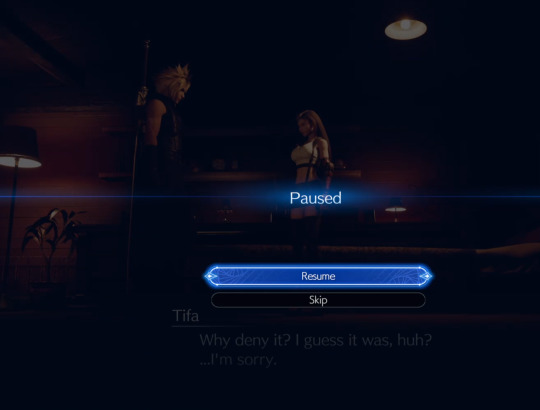
I felt sorry for doubting her and thinking she was just testing him again, so I didn't mention it and said she was just trying to casually chat but... uh... I guess I didn't need to feel bad about it after all... Regardless, I do believe that in her heart, she just wanted him to chat with her about that guy that he should somewhat remember and feel better about her own doubts about him. Its... complicated really. I wonder tho... is it my fault that this didn't end up well? Because I've gave the worst possible Answer? Or will it always end up like this?

I mean... it was impressive how she played with the Materia... but somehow she still kind of ruined it ^^'
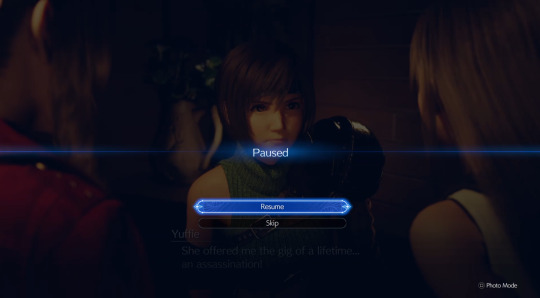
Uh... we are... not really doing that? ^^' I mean... I guess we do kill Soldiers from time to time and we certainly do not plan to play nice with Sephirot either but... an assassination sounds a bit too brutal for us ^^'
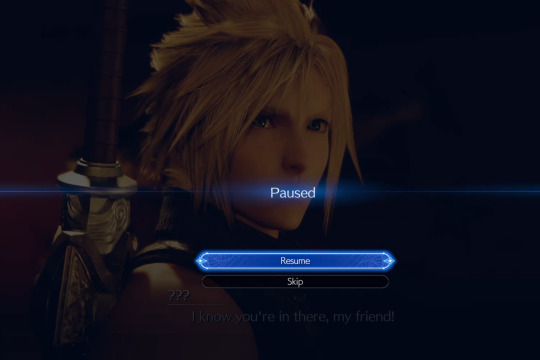
Oh god! Please tell me its not the guy with the motorbike. PLEASE!

I couldn't agree more... URG! Lets just get this over with.
Here I am, being absolutely frustrated for multiple In-Game-reasons and he is freaking flirting with me!

Holla. If you want to get to Aerith, you have to get through Cloud AND Tifa, my dude! So... I think I should call an Ambulance in advance, because its going to hurt XD
Oh... he just... left. Okay. No complains here ^^'

And he hasn't even met Zack yet... (Don't throw things at me! I was joking! Just joking! I swear!)

Thank you for the warning... lets go!

*goes crying in a corner* Not another freaking minigame. I hate those. I fucking, freaking hate those damned minigames, especially the non-optional ones T.T
I fucked it up. It might take me a few tries... URG.

I made it the second time... thank god. I want to rush through the game as much as possible but it doesn't make it easy for me AT ALL.

I could be wrong... but isn't this thing supposed to be ours eventually?
I am stuck again. In the middle of a bunch of Shira soldiers who don't even notice us ^^'

I have no idea who exactly the guy is or what his aim is. He is from Wutai. Rufus shot him once. And he looked like one of the man in the black robes for small a moment. But other than that... no idea!
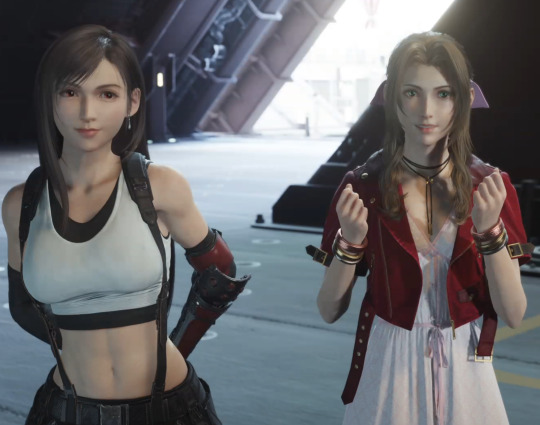
You see those two looking at Cloud like this and you know he has already lost that argument XD
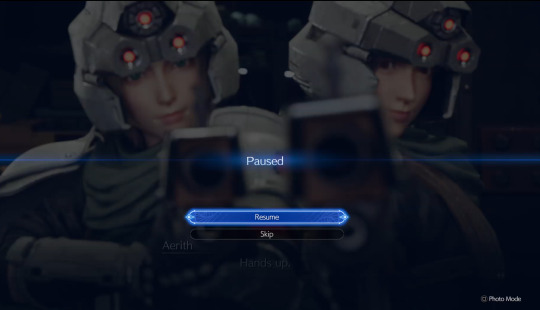
They have way too much fun XD

This is getting out of hand ^^'

Oh god! Is this ever going to end?

You need to win the upcoming parade for some extra point for Aerith. So... in trouble now. We're in trouble now. So in trouble now...

I certanly was not good enough for that ^^' Uh... Ma'am XD
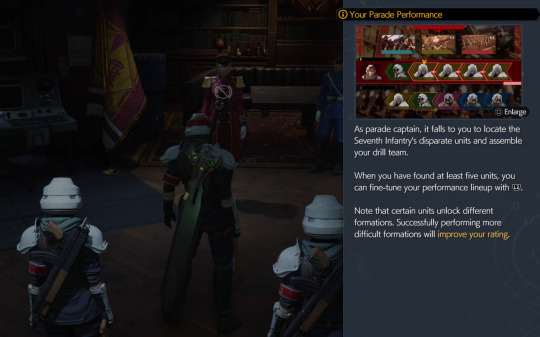
I will never finish this game XD
0 notes
Text
✨️ Welcome 🌙

My name is Lyra and this is my blog for my ffxiv oc Saran. You can find my main irl blog here
Things you may find here:
OOC posts about Saran, lore, headcanons and the like
Lots and lots of Gposes
Maybe some RP writing
Aesthetic reblogs
Links:
About
Screenshots
Aesthetics
Writing
You can also find Saran on my parters XIV account and our shared account (warning NSFW)
#pinned#pinned post#pinned info#ffxiv photography#ffxiv oc#ffxiv gpose#ffxiv screenshots#ffxiv#wol#gposers#ffxiv rp#ffxiv roleplay#Spotify
1 note
·
View note
Video
tumblr
G'raha putting on his own special show just for you, his Warrior.
Filmed at the home of the Grahalliance, The Lakeland Estate, Lavender Beds, Ward 3, Plot 33, Sephirot, Materia.
10 notes
·
View notes
Photo



I made another alt lol. Here’s Skay Tor’dai (He/Her), former Warrior of Light of the Tenth and riftwalking Black Mage nuisance. He fled the tenth with his boy girlfriend Baal Izlaif (They/He, pictured below) who contracted a voidsent to gain the power to travel the rift. The two are wanted in numerous shards for immense aether consumption.
You can find her on Sephirot (Materia DC)

#'ava baal is just a guy' fortunately skay likes guys#shb spoilers#shadowbringers spoilers#ffxiv spoilers#femroe#ffxiv#ff14
3 notes
·
View notes
Text
I haven't done anything mind blowing for a while, so how's about we strap in for this one?
Now, we all know the argument about Tifa and Aerith being the guardians of the main plot arcs because it's a fact. Aerith holds onto the overarching plot of saving the planet and Tifa is the “caretaker” of the intimate plot that restores Cloud's fractured psyche and unites SOLDIER Cloud and Real Cloud.
Cloud's plot relevance.
Niflhel (misty hel) is a location in Norse mythology which appears in eddic poems and could be interpreted as the lowest level of hell and is an important location in the role of Ragnarok (the end of the world)

“A sooty-red cock” from the halls of hel is one of three that will signal the beginning of Ragnarok. Since hel in FF7 could refer to Nibelheim after it burns, this links the town as being one of the key events in the plot for Cloud. One other comes from Jotunheimr (where giants menace humans in Midgard). This location has several sub locations that are echoed within the FF7 world: a protective wall (Gaea's cliffs), a well of wisdom (inside the temple of the ancients), the roots of yggdrasil (where Sephiroth is given the black materia).
The third bird is from Valhalla, which is the afterlife and could represent the lifestream in FF7.
Tifa in the OG was shown to be the root purpose of Cloud's motivation for joining SOLDIER and is the one who saves him after his mind shatters due to Sephiroth's interference. They both come from the same town. Nibelheim, which is based on the Norse concept of Niflhel. At the conclusion of the lifestream event, Cloud has resolved the internal plot conflict, leaving everyone free to complete the overarching plot.

Cloud is shown as a Norse warrior in FF7 with his association to the cloudy wolf, which is part of the FF7 compilation logo, and his bike, Fenrir, which is part of the Norse mythological concept of Ragnarok.
Cloud, as part of the overarching plot carries a dual persona as shown by the sephirot concept, he then falls in battle and is saved by Tifa, which is the Norse mythology concept.
Two plots, two contrasting source materials to draw on.
Tifa and the internal plot.
So, we have Nibelheim, the combined locations of the overarching plot where Sephiroth collapses Cloud's mind and then the lifestream where Cloud is reunited with himself. The symbolism of three is prevalent throughout FF7R. Three party members, three butterflies in Aerith's garden, three birds in both sectors.
In the OG, it was Tifa and only Tifa who could reunite Cloud with himself. It's stated in various media that no one else could do this for him. It's her role in this plot and is separate from the overarching plot, which is why there's shown a divisive line between the two when Tifa abandons the overarching plot to care for Cloud. She chose her own plot arc over Aerith's.
Tifa has been given the Norse mythological concept role of a valkyrie in FF7R.

Valkyrie wings are seen on Tifa's default gloves. She also has Norse runes on them that mean Victory. During times of peace, valkyries would serve mead to fallen warriors and keep them company (Tifa serves Cloud a drink).
Whenever a valkyrie's chosen warrior was revived by Odin it was because he showed great military prowess in battle. Cloud might not be a SOLDIER in name, but he's shown he understands military tactics.

Nibelheim shown as a reference to Norse mythology means Tifa's role is also one of Norse mythology. Given her new association to feathers, flight, choosing to save a soldier on the brink of death and the fact she's a fighter class, Tifa is in the role of a valkyrie. A warrior maiden, whose purpose is to care for fallen warriors and take them to Valhalla, or restore them to life if they're deemed worthy enough. In Cloud's case, he's returned to life because of Tifa's actions within the lifestream.
Valkyries are also lovers of heroes and are sometimes described as daughters of royalty. Tifa’s dad is the village chief.

We also learn, thanks to Nojima's new novel, that Tifa's mother is called Thea. The root meaning of this is that of a Goddess, so Tifa is born from a "goddess" and a chief.
Valkyries are sometimes accompanied by ravens and connected to swans and horses.

On Aerith's mural we have images of both a horse and swans and the black bird flying over the city is also a well-known one. These may not associate to Tifa directly, but they're all symbols in the game for a purpose. The black bird flies over the path that Cloud took from the cliffs to Midgar. The pegasus likely refers to Zack's last stand because they associate to heroes, and the swans are outside the bounds of the lifestream imagery and likely refer to Zack and Aerith. But, Tifa associates to both Zack and Aerith because she knows them both and acting like they haven't had an impact on her as a person and how she moves forward with her life would be ignoring a large part of her character growth. Aerith was Tifa's friend and Zack tried to help her in Nibelheim. Zack is the idealised hero of FF7, so his association to valkyries fits the metaphors, although he is a hero that Tifa didn't save.
Tifa's role in FF7R is that of a valkyrie who chooses to save her fallen warrior, Cloud, because she's in love with him. That fallen warrior, who suffered a dual persona because of the themes portrayed in the overarching plot, then goes onto prevent the end of the world and reach his promised land with his family, thus uniting the two themes of the game at its conclusion.
#final fantasy 7 remake#final fantasy 7r#final fantasy viir#ff7r#ffviir#Tifa lockhart#Tifa theory#Overarching plot vs internal
124 notes
·
View notes
Text

Woop wouuuuup.
Next, black chocobo.
Then Golden.
Then kotr.
Fuck the final attack.
Then mime materia.
And after that Ruby and Emerald Weapon.
Im going for it.
Then Sephirot. God. He is gonna get so fucked.
Like really god damn fucked.
1 note
·
View note
Link
0 notes
Photo

Bella sequenza di Tarocchi. Ieri il Cavaliere ci spronava all'agire, oggi il Dieci di Pentacoli dice che se ieri qualcosa è stato messo in opera, oggi è già possibile vedere alcuni risultati. Tutti i Dieci vivono sull'Albero della Cabala nella Sephira Malkuth,detta la Manifestazione. La potete vedere nell'immagine, è la sfera più in basso, quella fra i due volti. Come appena detto viene chiamata Manifestazione perché rappresenta il nostro pianeta, là dove è possibile portare nella materia i propri progetti. Il seme di Pentacoli rappresenta a sua volta l'elemento Terra. Nulla potrebbe essere più concreto di quello che si manifesterà oggi. Potrebbe addirittura essere la conclusione di un progetto di lunga durata. Buon giovedì #diecidipentacoli #lacampanellachesuona #malkuth #maniferstazione #sephira #sephirot #alberodellacabala #consigliodelgiorno #messaggiodelgiorno #taroccodelgiorno #estarologiaevolutiva https://www.instagram.com/p/B2lNH8ZIcNX/?igshid=5y26gmi8lyxb
#diecidipentacoli#lacampanellachesuona#malkuth#maniferstazione#sephira#sephirot#alberodellacabala#consigliodelgiorno#messaggiodelgiorno#taroccodelgiorno#estarologiaevolutiva
0 notes
Text



Was taking pictures of the moon and the night sky above my island sanctuary, which is 3 levels away from 20!
0 notes
Text
“Il cuore non è libero. È l’inevitabile”. Piccolo discorso sulla natura dell’amore. Di chi ci innamoriamo davvero: di un corpo fugace, di un archetipo eterno, di noi stessi, di un’idea coltivata da ragazzi?
Le specie animali e innanzitutto quella umana sono dotate di proprietà la cui natura non è stata interamente scoperta. La più grande qualità che esse posseggono, che è anche il loro più grande mistero, è l’amore. Se ne è comprensibile la forza di attrazione che lega in un vincolo esseri viventi dello stesso sangue, quali madre e figlio, altrettanto non può dirsi del vincolo che in base alla stessa forza di attrazione lega esseri viventi non consanguinei come sono due innamorati. Tanto è dunque diversa questa forza di attrazione che non potrebbe parlarsi di amore per entrambe le condizioni, sebbene coincidano le manifestazioni: spirito di sacrificio, trasporto incontenibile, sentimento di appartenenza, obnubilamento della ragione. Si dice “ti amo” a un figlio così come a un innamorato, ma sappiamo che il primo tipo di amore è più forte dell’altro da sembrare di un diverso genere. E ancora più distinto è il tipo di amore nutrito per Dio, al quale si è chiamati da un moto di adorazione in una specie di superlativo che molte volte rivolgiamo anche alla persona amata quando crediamo di dovere esprimere un trasporto ancora maggiore dell’amore.
*
Tiziano, “Amor sacro e Amor profano”, 1515 circa
Ma cos’è dunque l’amore? Si potrebbe chiudere la questione risolvendo che si tratta di una qualità ineffabile, ovvero non definibile, e prendere così in prestito la valutazione di Sant’Agostino che della lingua impronunciabile di Dio diceva che parla in maniera ineffabiliter, “senza dire”, senza definire. In realtà, provare a dire perché amiamo una persona comporta in ogni caso dare una spiegazione parziale, valendo quanto ogni persona amata pensa: “Vorrei che chi ama mi capisse, ma se mi ama non c’è ragione che mi capisca”. Indefinibile è l’amore anche quando si prova a immaginare un mondo che ne sia privo: si scopre che l’umanità si vale di altre specie di legame vocazionale e si conforma a livelli progressivamente più bassi, passando dalla gratitudine, dalla stima e dal rispetto, che implicano un certo sentimento, a ragioni che vanno dall’utilitarismo all’opportunismo al debito di riconoscenza nel cui fondo tuttavia agisce un surrogato minimo dell’affetto che in tutte le sue forme comunque designa una volontà sottesa a una scelta, a una preferenza. L’uomo ama perché sceglie? Detto che la sostanza primigenia dell’amore è la scelta operata nei confronti di qualcuno, non si ha però la risposta circa la sua reale natura, perché occorre chiedersi il motivo posto alla base di tale scelta, sperimentando ognuno di noi come la persona amata non si scelga per utilitarismo o convenienza, semmai si sceglie la persona da amare (un tutore, un fratellastro, una matrigna), ma in tal caso mentendo a sé stessi e facendosi un carico e un torto. Alla base della scelta che facciamo della persona amata (che può essere socialmente la più riprovevole) agiscono piuttosto funzioni e pulsioni certamente non teleologiche che, come la natura dell’amore, sono misteriose. Ciò porta a ritenere che l’amore sia una costante della natura umana, cioè una legge universale di tipo apodittico. C’è in quanto c’è. Scriveva Albert Camus in Il primo uomo: «L’amore vero non è né scelta né libertà. Il cuore non è libero. È l’inevitabile».
*
Pe trovare una ragione di base all’amore bisogna partire dalla religione. La fede cristiana (a differenza di quella ebraica, che postula un Dio pretenzioso e severo, e quella islamica, che adora un Dio anch’esso unico, assiso come giudice asseverativo delle sue leggi piuttosto che regolatore del destino umano) è basata sull’amore divino verso gli uomini e si richiama alle divinità pagane greche e romane che con gli uomini dividevano anche le sorti: per modo che conosciamo una forma di amore celeste che è ancora più grande e ineffabile di quello terrestre, ancora più misterioso nella sua giustificazione. Perché Dio sente di dovere amare gli uomini se è onnipotente e può disporre delle loro vite anche a piacimento, imponendo loro regole di condotta unilaterali, a cominciare dall’obbligo di amarlo senza essere contraccambiati? Si potrebbe rispondere che Dio non ama l’umanità in quanto tale bensì come suo prossimo, ovvero come parte del proprio Creato, quindi come una emanazione (espressione dei sephirot), tanto che ama allo stesso modo – per la cura messa nella loro creazione – sia il mondo animale che quello vegetale. Si arriva per questa via a dedurre che se Dio ama gli uomini, a maggior ragione gli uomini, creati a sua somiglianza, sono dotati di amore verso i loro simili e lo stesso Dio. L’amore di cui gli uomini e gli animali sono dotati promana perciò come dono divino e frutto dell’albero della vita, è cioè appunto una proprietà naturale, insita nella natura del mondo.
William Dyce, “Francesca da Rimini”, 1837
Sennonché Dio, che ama il mondo perché è una sua creazione, opera come un padre nei confronti dei figli, mentre non c’è spiegazione dell’amore che gli uomini provano per gli altri uomini (che non sono loro creature), in particolare di sesso diverso, una volta fatta la tara all’attrazione fisica. Questa, ricercando il piacere nella bellezza, determina l’impulso naturale alla riproduzione basata sul criterio di una scelta che nel mondo animale si precisa nel significato di salute fisica necessaria a garantire una procreazione che salvaguardi l’integrità di specie, fenomeno valido anche nel mondo vegetale, e che nella specie umana opera a un grado che prescinde dalla procreazione valendo invece come piacere sessuale. Gli uomini si amano perché attratti sentimentalmente da imperscrutabili punti di forza anche mentali e morali che nella loro sostanza non mutano né al variare delle civiltà, dei luoghi, delle religioni e delle epoche e che sono fondati su affinità paradigmatiche sorrette da valori sia fisici che spirituali: ci si può allora innamorare di un malandrino con un brutto ceffo se tale individuo risponde al proprio ideale e alla propria indole. Allo stesso modo gli uomini si odiano, ma rispondendo a motivazioni perlopiù oggettive o comunque meno evanescenti di quelle per le quali si amano. Osserva Manzoni nei Promessi sposi che «è uno dei vantaggi di questo mondo quello di poter odiare ed essere odiati senza conoscersi». Si può odiare, come usano oggi gli hater, persone sconosciute, ma non si può amare chi non si conosce. Si potrebbe dire allora che l’odio segue logiche meccaniche di determinismo mentre l’amore schemi quantistici di indeterminazione. E si avrebbe in qualche modo un primo risultato in vista di una possibile definizione.
*
Amor ch’a nullo amato amar perdona: Dante Alighieri indicò una definizione particolare che però ha riguardo più agli effetti che alla natura dell’amore, giacché scoprì che è impossibile a una persona amata non ricambiare l’amore verso la persona che le manifesta amore. In realtà de Clérambault avrebbe accertato una sindrome patologica nella persona che amando un’altra veda in essa segnali inesistenti di ricambio e molto prima Cervantes nel Don Chisciotte avrebbe fatto dire a Marcela di non comprendere «perché ciò che viene amato in quanto bello, per il solo fatto di essere amato debba amare chi lo ami», affermando l’infondatezza del teorema circa la necessaria corrispondenza di un amore non sentito. Nondimeno nel postulato di Dante si può vedere la straordinaria forza di cui l’amore è capace. Ma cosa sia questa forza e su quale sostanza si regga rimane una questione aperta. Un errore di fondo è forse linguistico: avere cioè compreso entro un unico termine accezioni molto diverse, dal momento che – come si è detto – l’amore di un padre verso il figlio non può essere accostato se non per analogia a quello di due fidanzati, né l’amore tra due amici può essere accomunato a quello di due fratelli, se di due amici diciamo che si amano come fratelli. Quel che appare ancora più misterioso è il diverso amore verso un figlio o un fratello rispetto a un altro, cerchie entro le quali viene quindi operata un’ulteriore scelta spontanea ancora più sottile e non confessa né cosciente.
La questione va forse affrontata in una nuova prospettiva e con altri mezzi. Partendo da un postulato: se la natura è fondata sul principio che nulla è inutile al suo funzionamento, essa ha necessariamente voluto l’esistenza di una forza così grande per dare fondamento all’armonia del mondo o meglio alla sua tenuta: come tale ricorda la materia oscura, l’elemento cosmico che tiene unito l’universo in opposizione all’energia oscura che tende invece a disgregarlo – energia oscura che corrisponderebbe all’odio. Se insomma l’amore c’è perché necessario, di conseguenza è necessario anche l’odio, così come a un protone corrisponde nella fisica naturale un neutrone: odio che nella forma di una manifestazione di volontà però manca – o sembra mancare – nel mondo animale, se si esclude il caso immaginario di Moby Dick, valendo in esso il cosiddetto istinto. Ma a questo punto occorre chiedersi: l’istinto che spinge un animale a manifestare quello che appare odio è lo stesso che induce gli stessi animali a esprimere amore? I cani amano i loro cuccioli e i loro padroni seguendo un istinto nel quale noi vediamo invece un sentimento di affetto? Quella allora che chiamiamo ragione, contrapposta all’istinto e propria degli uomini per distinguerli dagli animali, non può essere una forma migliorata di istinto, che ci spinge a odiare come anche ad amare secondo impulsi naturali e generali?
*
Gustav Klimt, “Il bacio”, 1907-08
L’ipotesi che l’amore possa essere, come l’odio, di tipo istintivo condurrebbe a concepire l’uomo non solo più vicino alla specie animale ma soprattutto più uniforme nei comportamenti. In sostanza come un cane, sia nell’Antico Egitto che oggi, si comporta seguendo sempre lo stesso istinto, così in amore l’uomo si dimostrerebbe di un uguale modello di comportamento generale fatto poi di tante varietà. Avremmo così che la più grande forza di cui l’uomo è dotato sia pure la più manifesta prova della sua natura animale. La teoria è suggestiva perché, nello stesso tempo, avvicina gli animali all’uomo e li fa capaci di amare e odiare nelle stesse forme elementari. E di conseguenza se fosse dunque documentato che gli animali amano operando una scelta tra i loro simili che non sia quella della migliore selezione ai fini della conservazione della specie e odiano in base a un istinto graduato, il teorema di eguaglianza sarebbe dimostrato. Ma sorge un’obiezione derimente: mentre l’odio può ben essere ricondotto alla sfera dell’istintivo, dove è peraltro più consolatorio vederlo, l’amore non ha nulla che fare con il ragionevole, essendo piuttosto il suo principale antagonista. Il cuore ha le sue ragioni che la ragione non conosce, ci dice Pascal. L’uomo ama non secondo ragione ma nemmeno secondo un istinto giacché sceglie chi amare: e ciò fa non calcolando il massimo risultato in termini di selezione ma seguendo oscuri disegni del proprio animo. Paolo Coelho dice cosa uguale: «Le persone si innamorano prima con le loro anime che si incontrano che con i corpi».
Ecco: l’animo, o l’anima. Che non è la coscienza né la volontà né l’intelletto e neppure la ragione. L’animo è l’atomo dell’amore ed è di per sé un mistero ancora più grande di cui è altrettanto ignota la natura. Ma è proprio l’animo che detta all’amore i passi da fare, così come plasma i gusti, le preferenze e appunto le scelte della vita: gusti, preferenze e scelte che sono il provento della propria formazione figlia dell’educazione empirica. Non è dunque ammissibile che l’uomo, a differenza di qualsiasi animale, sia uguale per sempre e dappertutto. Si educa ad “amare” un sapere come la musica o l’arte secondo le esperienze fatte e le conoscenze acquisite nella propria cultura e secondo i precetti della propria civiltà, dunque si arriva ad amare una persona in base agli archetipi che si sono coltivati riguardo ad aspetto fisico, carattere, modi d’essere e di fare, attitudini e interessi condivisi, tutti valori pertinenti a un tempo e a uno spazio ben delineati. Insomma l’amore è un sentimento innato ma non immutabile, perché cambia in due versi, il secondo conseguenza del primo: in base alla propria educazione sociale e in base alle proprie affinità.
*
Risultato di questo teorema (che riguarda ovviamente l’amore coniugale) è che ci innamoriamo di una persona che nel nostro animo conosciamo già idealmente. In realtà non la scegliamo, ma la troviamo dopo averla creata virtualmente – esattamente come Dio ha creato l’umanità che ama perché sua emanazione. I “colpi di fulmine” non sono allora incontri improvvisi che ci sembrano fatali ma riconoscimenti e agnizioni. In sostanza troviamo quel che abbiamo cercato, ciò che ci induce a confessare alla persona amata di conoscerla da sempre. Questa via porta a stabilire che non si possono avere tanti ritrovamenti quante sono state le ricerche perché nel nostro animo si è creato, in origine alla nostra formazione, un solo modello ideale. Ci possono però essere falsi riconoscimenti, per cui crediamo di aver “trovato l’anima gemella” rendendoci poi conto di esserci sbagliati e scoprendo in essa dissonanze rispetto al nostro archetipo, per cui ci rimettiamo alla ricerca non per cercare un secondo amore ma per trovare sempre il primo. Tale ricerca può durare tutta la vita e passare da errore in errore attraverso una serie di continui riconoscimenti e disconoscimenti, condizione che non dà mai la certezza di una perfetta corrispondenza dell’ectipo all’archetipo: la copia rimarrà sempre diversa dal modello, perché è realmente impossibile che una persona ricalchi perfettamente quella che vorremmo, sicché il miglior risultato possibile è quello nel quale si abbiano le minori dissonanze, stato che molte volte fa parlare di miracolo e di “amore eterno” quando in realtà non si vedano le residue difformità o la copia finisca per annebbiare il modello e prevalere su di esso.
*
L’amore è allora questo: la condizione temporanea nella quale una persona vede un’altra trovandola corrispondente a quella cercata. Questa temporaneità implica che si parli però di innamoramento, al di là delle definizioni date da Francesco Alberoni: finché si è innamorati di una persona è segno che il proprio modello continua ad essere soddisfatto, perché venendo meno questo soddisfacimento viene a mancare proporzionalmente anche l’innamoramento. Se ne deduce che non si possa parlare mai di amore, che richiede la definitività del riconoscimento, ciò che è impossibile se non per effetto di un vero prodigio o di un rifacimento del modello. Tale configurazione depone per un’altra: l’amore, essendo definitivo, involge uno stato di quiete, mentre l’innamoramento, confatto al moto e transeunte, integra uno stato di impeto e di passione, dovuto all’incessante confronto che la persona amata ci costringe a fare con il modello che abbiamo in essa riconosciuto. La durata nel tempo di tale confronto stabilisce la forza del rapporto amoroso, com’è in un rodeo: più a lungo due persone si amano, dentro o fuori una convenzione quale il matrimonio, l’unione civile, il fidanzamento o l’adulterio, e più grande si rivela il loro amore, ma solo perché i rispettivi modelli ideali continuano a scambiarsi punti di corrispondenza. Nel momento in cui, anche a distanza di molti anni, tale sovrapposizione di modelli comincia a dare segnali di corto circuito perché nascono punti di attrito, dovuti anche a processi di logoramento, ecco che l’amore entra in crisi in una o in entrambe le parti. Ciò può avvenire anche nel caso in cui uno dei due innamorati scopra in una terza persona elementi che meglio rispondono al proprio modello e che il più delle volte sono proprio quelli che mancano o difettano nel partner. In questo gioco di scambi possono naturalmente intervenire, come si è detto, fattori che riguardano aspetti diversi dai sentimenti, come la convenienza, l’interesse economico, il calcolo: ma siamo fuori dalla sfera dell’amore. Dentro di essa quel che avviene ha riguardo al solo archetipo ideale e personale che ci costruiamo nella fase tra l’adolescenza e la giovinezza e che non cambierà mai. Uomini che nella fanciullezza hanno imparato segretamente ad amare donne procaci, perché tale è stato al loro tempo il modello invalente di donna desiderabile, difficilmente ameranno una donna con una silhouette conforme al tipo di donna magra e col vitino da vespa che si affermerà successivamente. Allo stesso modo donne che da ragazze hanno sognato maschi muscolosi e massicci faticheranno ad accettare uomini longilinei se non adattando il proprio modello personale a quello generale venuto di moda, ma così rinunciando ad affermare un proprio progetto, col rischio di una insoddisfazione permanente e magari inconscia.
*
Se allora non si ama in un’altra persona che il proprio modello ideale, in realtà non ci si innamora che sempre di sé stessi. Questa equazione, che rimanda al mito di Narcisio e sottende una forma di disturbo della personalità, può essere tradotta in una comune regola di esperienza, per la quale diciamo che stiamo bene con un’altra persona verificando che in realtà stiamo bene con noi stessi. Può sembrare un paradosso, perché se stiamo bene con noi stessi è perché stiamo bene con un’altra persona, quella che appunto ci fa stare bene, ma non lo è. A farci stare bene non è l’altra persona in quanto tale, ma l’opera di controllo che facciamo in ogni momento del funzionamento del rapporto di scambio di energia tra il suo modello archetipico in risposta al nostro e viceversa. Stiamo bene perché quello che facciamo e vediamo fare è proprio quello che vogliamo, cosa che ci fa sentire in salute, non solo mentale ma anche corporale, perché è il nostro modello a funzionare e a trasmetterci segnali di benessere o meglio di tranquillizzazione circa il suo funzionamento. Ecco allora cos’è forse l’amore: una forza molto grande che regola in forma oscura i meccanismi più profondi del nostro animo, l’unica che si serva senza renderci coscienti delle scienze morali: al punto che il proprio ideale d’amore può essere ispirato a un personaggio romanzesco e che, avendolo incontrato da ragazzi in un libro, per tutta la vita non si faccia che cercarlo nella realtà. Questo sì un paradosso. Ma del resto, non ci innamoriamo sempre di un nostro ideale, di una idea inesistente nella realtà e che ricreiamo nella nostra officina interiore per renderla vera?
Gianni Bonina
*In copertina: Marilyn Monroe fotografata da Richard Avedon
L'articolo “Il cuore non è libero. È l’inevitabile”. Piccolo discorso sulla natura dell’amore. Di chi ci innamoriamo davvero: di un corpo fugace, di un archetipo eterno, di noi stessi, di un’idea coltivata da ragazzi? proviene da Pangea.
from pangea.news https://ift.tt/2TwHNN4
0 notes
Text
Materia. Oceania. The data centre where "congested", at the height of the Dawntrail rush, meant a queue of about twelve (indistinguishable from the standard queue to get in on a Saturday morning at 10am AWST).
My main is on Sephirot, I have a couple of alts on Ravana, and one more on Bismarck.
177 notes
·
View notes
Text

Oh great... its in German right now. I need to see if I can do something about it. (BTW... this is a "What happened so far..." that you can watch.
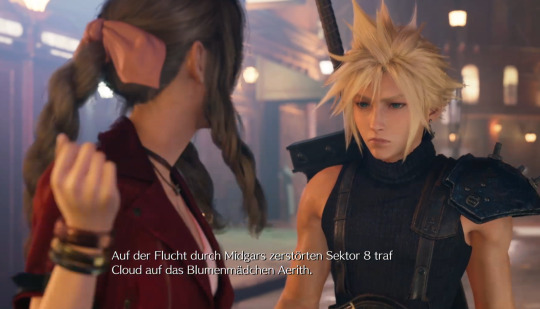
This story is told by Red. But... he only joined Clouds team after they got to save Aerith in Shinra - he said so himself - so how did he even know about the stupid flower story that they absolutly needed to mention? I mean, even if they told Red everything that happened so far, I can not see anyone, not even Aerith beeing like: "Oh and I gave Cloud a Flower that symbolized a reunion and then he gave it to Tife.", when making a summary of what they have been through so far.
Anyway... they just NEEDED that Shipping-Hint-Confusion appearantly.
Well... whatever. I try to figure out if I can change the language of that game.
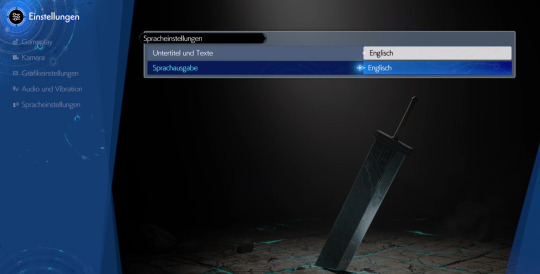
That should do it.
By the way... it should come to no surprise to anyone but were playing this on EASY.

They call it "Journey into the unknown" but... knowing what I know I'd like to say: "MY ASS!" But, we will see.

You know the drill, this is the only way to get screenshots from this game. Yes I know, you can barely read the text, but there is no other way in this game.
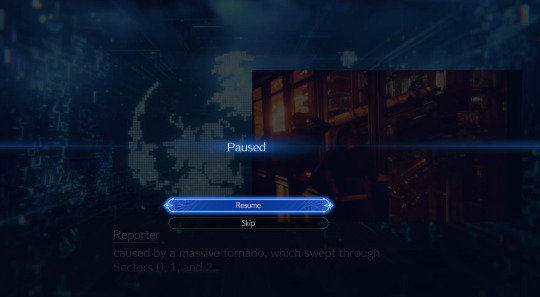
A... uh... Tornado? What Tornado? Oh... because of the Wispers maybe?
Okay Guys, we passed by a picture of that Dog that Shinra uses for commercials or bags of chips or whatever and it is actually the dog from Zacks... uh... timeline(?).
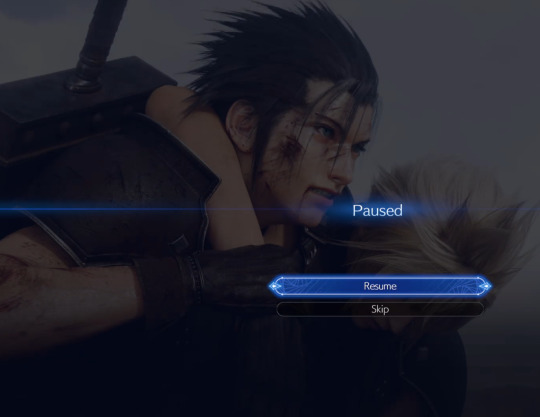
Oh look! Its "I am alive because Fanservice sells and people think I am cool and sexy!" - Uh I I mean, its Zack. Yes, that is what I wanted to say. (I do hardly know the guy, so at the moment, I have nothing against him. I only have something against the fact that SE only bring him back because it is as good as a selling point for most players as Sephirot getting more screentime and lots of BL-Moments with Cloud XD
So... they better make this part of the story VERY good and VERY believable.
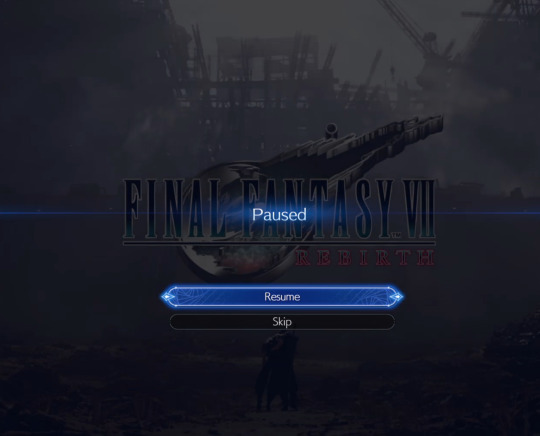
They thought this is the best moment to place that logo? In that alternative reality with a barly concius Cloud, a beaten up Zack dragging him along and all that destroyed part of Midgar in the background? WHY?
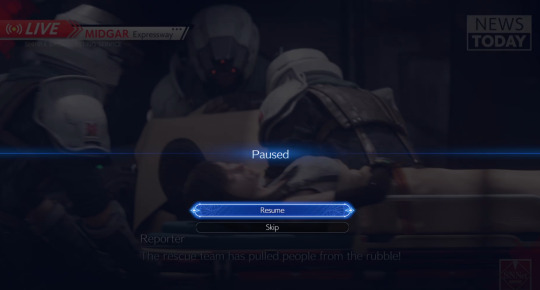
I would say, for SEs purposes it is highly convinient that all but Cloud, Zack and Aerith are dead in this timeline. BUT Cloud beeing alive doesn't really fit this mess. I mean... I guess they could use him to help the other Cloud with his... uh... memorie issues... but then we still have two Clouds. So... one must die eventually? Why I say that even tho this is a different timeline? You'll get that eventually.

There is something off about that. Why was Aerith with Avalanche to beginn with? And why now? Zacks death caused Cloud to be... who is is now in our timeline and this causes his work with Avalanche and this lead to him meeting Aerith and her kind of joining the team to beginn with. And even if she managed to join them without Cloud, what is with the reactor Bombings? I mean, how long did it take Zack to get to Midgar? This is... I don't get that.
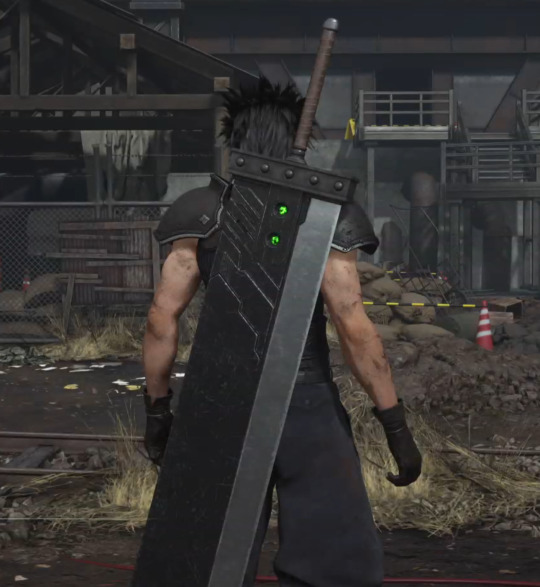
Oh... they weren't dead yet. It showed us Red actually attacking the driver of the helicopter. But that thing crashed now so... who knows ^^'
ANYWAY it seems it Zack-Time.

I don't want to be this kind of person but... this guy just barely survived and attack that had killed him in another timeline, he dragged Cloud all the way to Midgar. He is all beating up and yet he is already fighting Shinra-Troops again? I get that he is an elite soldier and all but... shouldn't even he be exausthed at this point? Then again, adrenaline does work magic sometimes and he just saw his hurt girlfriend falling down with a helicopter so... that... situation gets a pass, I guess.

I am pretty sure that Photo-Mood is a DREAM for the Fangirls screaming his name XD
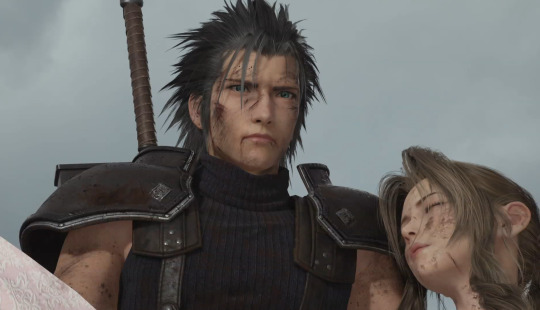
HOLY SHIT! This guy is strong. Wow.
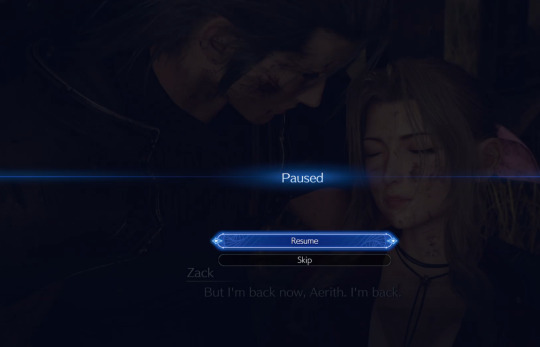
OBVIOUSLY XD
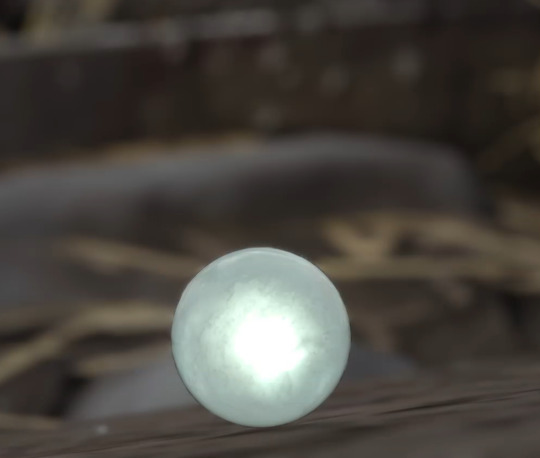
The materia fell out of Aeriths hair... that... can not be a good sign, can it?
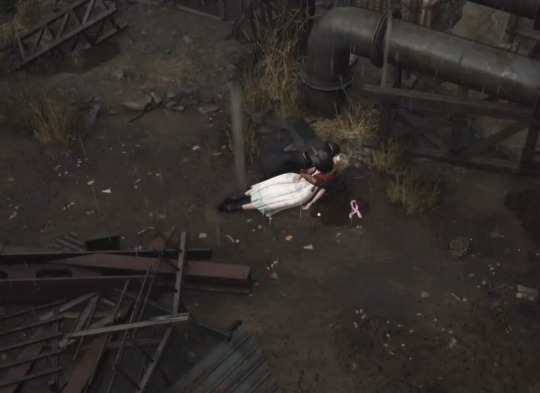
Poor Zack. He survived this timeline just tun run straight into the next freaking mess. (BTW... how does this even fit into the scene with the church from Intermission? O.o)

Wait! Wait! Wait! Wait! Wait! We skipp from Zack directly into the freaking Flashback? No walking anywere beforehand?
I could be wrong (and obviously, in the original game we didn't have a Zack-Timeline either) but I think in the original we first had to walk into a city or something and we got the Flashback after staying in a hotel or so.
(That aside... that is also not the same car from intermission - just let me take over game sins already XD)
In the original I found most of the overly long flashback immensly boring, but I assume they made it more interesting in this game.
0 notes
Text

Front of the house!
0 notes